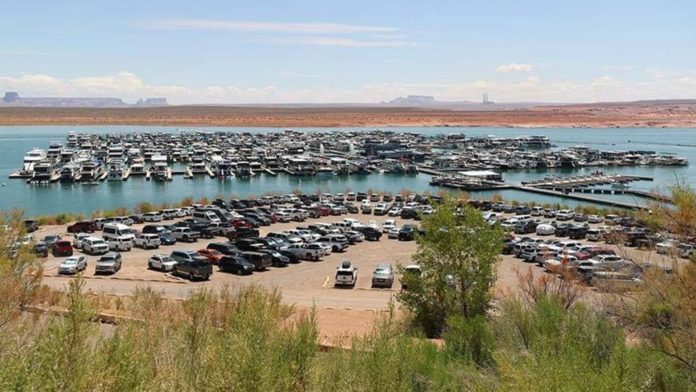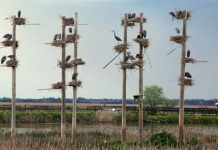SALT LAKE CITY, Utah, April 5, 2024 (Gephardt Daily) — As the weather starts to warm, the Utah Division of Wildlife Resources is reminding recreationists that anyone who launches a boat or other watercraft in Utah is required to take an annual mussel-aware boater course.
The course is required for Utah residents and nonresidents, and also applies to nonmotorized watercraft — including paddle boards and kayaks.
Anyone who wants to launch a motorized boat also must pay an annual aquatic invasive species program vessel enrollment fee. The fee is separate from boater registration and has a separate decal.
“The aquatic invasive species funds are used to help prevent quagga mussels from spreading from Lake Powell to other Utah waterbodies,” DWR Lt. Bruce Johnson said. “These funds help pay for new dip tanks being installed around the state that more efficiently decontaminate boats, and also pay for staff to help inspect and decontaminate boats in areas without dip tanks.”
The boater registration payment can be made through the Utah Division of Motor Vehicles, and the aquatic invasive species fee can be paid online. The fee is $20 per watercraft for residents, and $25 per watercraft for nonresidents.
The annual mussel-aware boater course must be completed before the aquatic invasive species program vessel enrollment fee can be paid. Upon completion of the course and payment of the fee, boaters will receive a current-year decal via mail.
All watercraft leaving Lake Powell — currently the only Utah waterbody with confirmed quagga mussels — are required to have an exit inspection. After a watercraft is inspected, it still must be professionally decontaminated before it can launch at a different waterbody.
If a decontamination can’t be performed, the watercraft must follow the recommended cleaning and draining guidelines, and wait the required dry time before launching again, according to DWR.
Utah’s required dry times after boating at Lake Powell are seven days in summer, 18 days in fall and spring, and 30 days in winter. Wakeboard boats are defined as complex boats, which require a 30-day dry time regardless of the time of year, unless they undergo a DWR-certified aquatic invasive species decontamination.
There are more than 40 inspection stations located in Utah, with some at boat launch ramps and others along highways. A map of the inspection stations is available on the DWR’s STD of the Sea website.
When leaving any waterbody or transporting watercraft, all drain plugs must be removed, according to DWR. Boaters also should remove any sea strainers while transporting their watercraft.
“We are so appreciative of all the boaters who are committed to doing their part to prevent the spread of quagga mussels and other aquatic invasive species in Utah,” Johnson said.
Why quagga mussels are bad
- They plug water lines, even lines that are large in diameter.
- If they get into water delivery systems, it will cost millions of dollars annually to remove them and keep the pipes free, which can result in higher utility bills.
- They remove plankton from the water, which hurts fish species.
- Mussels get into boats’ engine cooling systems. Once they do, they’ll foul the system and damage the engine.
- When mussels die in large numbers, they stink; the sharp shells of dead mussels also can cut feet of those walking along beaches.
Source: Utah Division of Wildlife Resources







